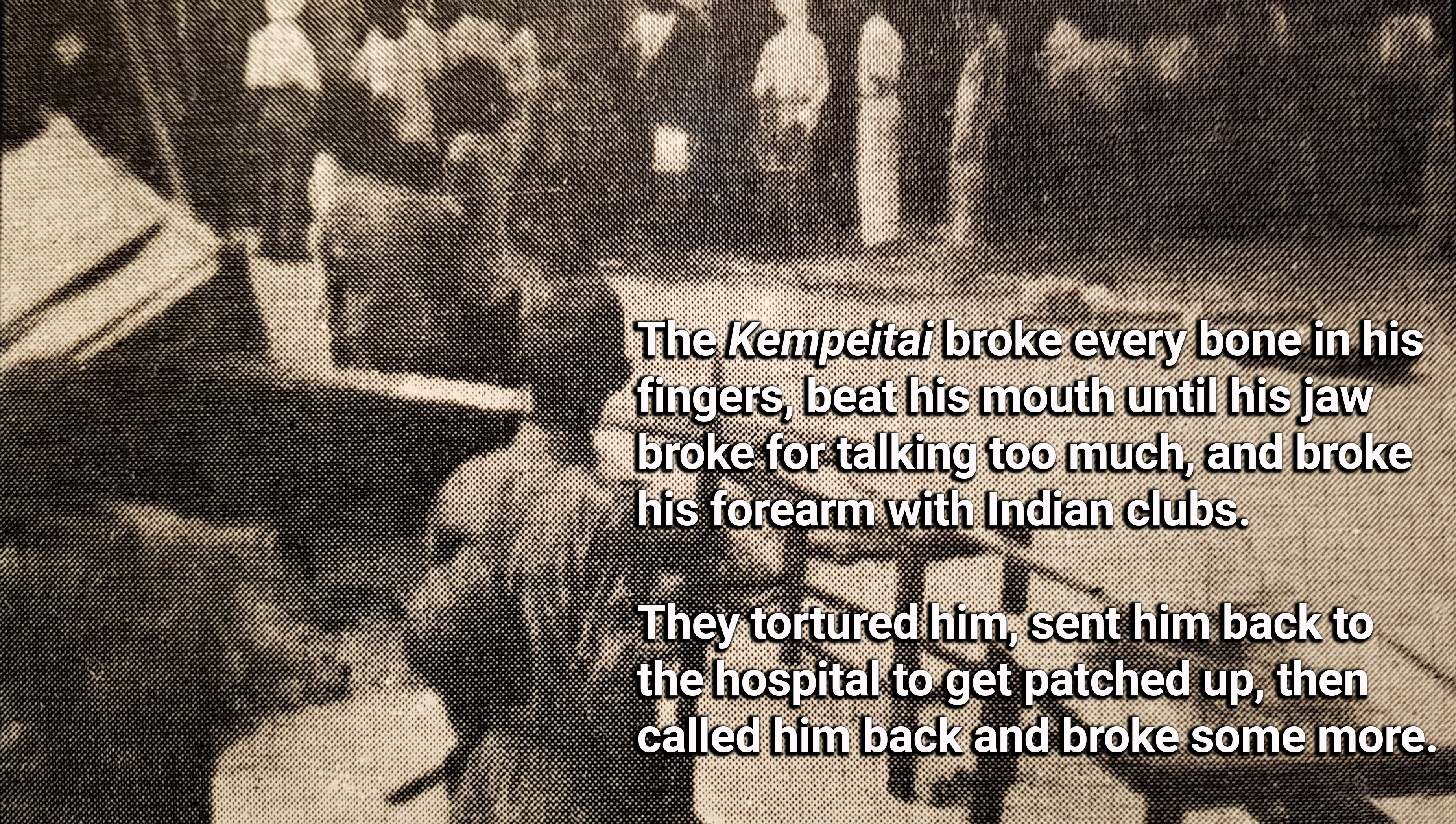Following the events that swept Singapore into World War Two, the British surrender of Singapore to the invading Japanese forces marked the beginning of a dark chapter in Singapore's history.
The characters presented below are fictitious, but the events described are based on the actual ones that occurred during the war.
Bencoolen Street, Singapore
February 15, 1942, 5.30pm
An uneasy peace had descended on the streets of Singapore. After one week of shelling and air raids by the Japanese, the silence was part relief and part uncertainty. Was the war over?
A charred body stirred on the street, dragging its legless form towards the boarded up shophouses. In its grip, was the day's edition of The Sunday Times - a bleak one-page document singed at the edges.
Just right below the masthead was Governor Shenton Thomas' affirmation that "Singapore Must Stand; It SHALL Stand!"
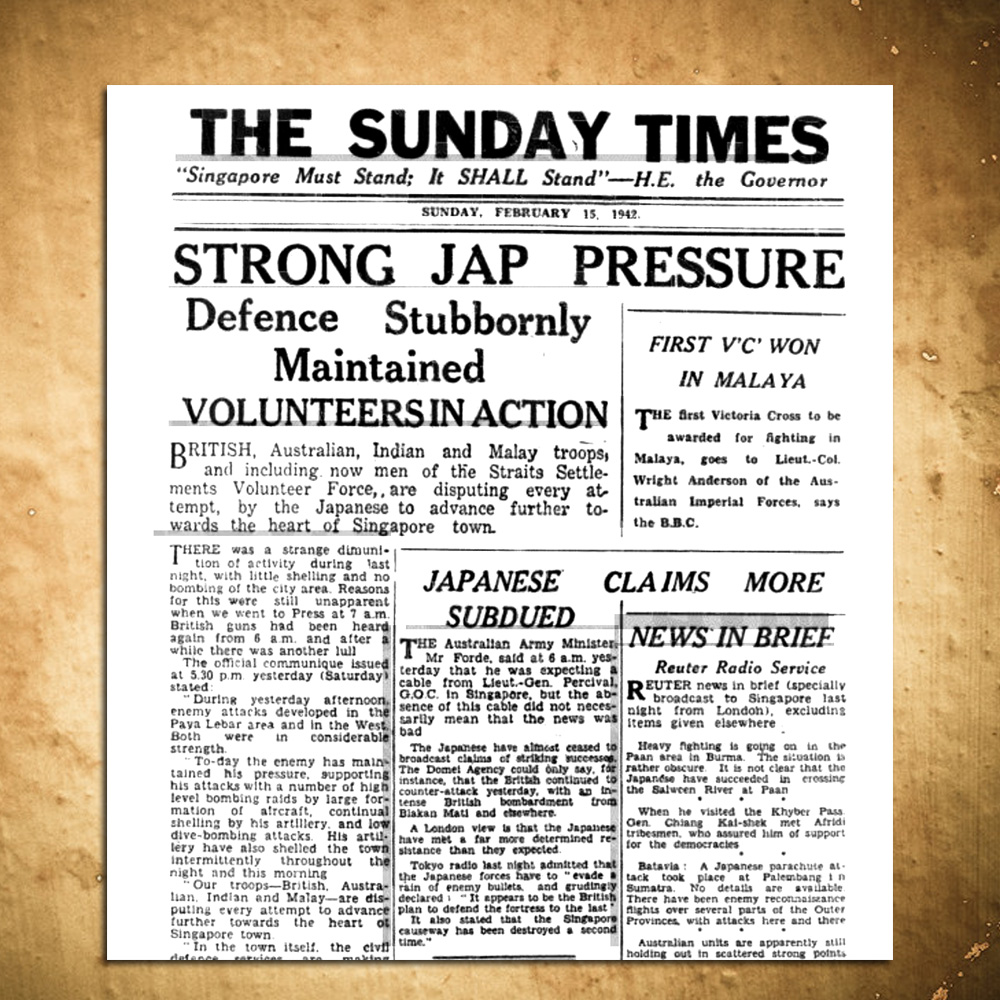 February 15, 1942 edition of The Sunday Times. Via NewspaperSG.
February 15, 1942 edition of The Sunday Times. Via NewspaperSG.
Hours later, the radio delivered disastrous news for the British: Lieutenant-General Arthur Percival, the commander of the British forces, had signed the document of unconditional surrender, ceding Singapore to Japanese commander, General Tomoyuki Yamashita.
Singapore, the impregnable "Gibraltar of the East" had fallen to Japan.
Changi Beach, Singapore
February 21, 1942, 1.35pm
18 year-old Chen Guang stood shaking uncontrollably. Behind him, the waves crashed against Changi Beach. In front of him, a line of Japanese soldiers cocked their rifles and took aim in his direction, along with the other Chinese men who were bound together alongside him.
Earlier that day, General Yamashita had ordered the elimination of all anti-Japanese elements from the population.
The Japanese called it the Dai Kensho (The Great Inspection), but the Chinese saw it for what it was - Sook Ching (肃清), literally 'cleansing'.
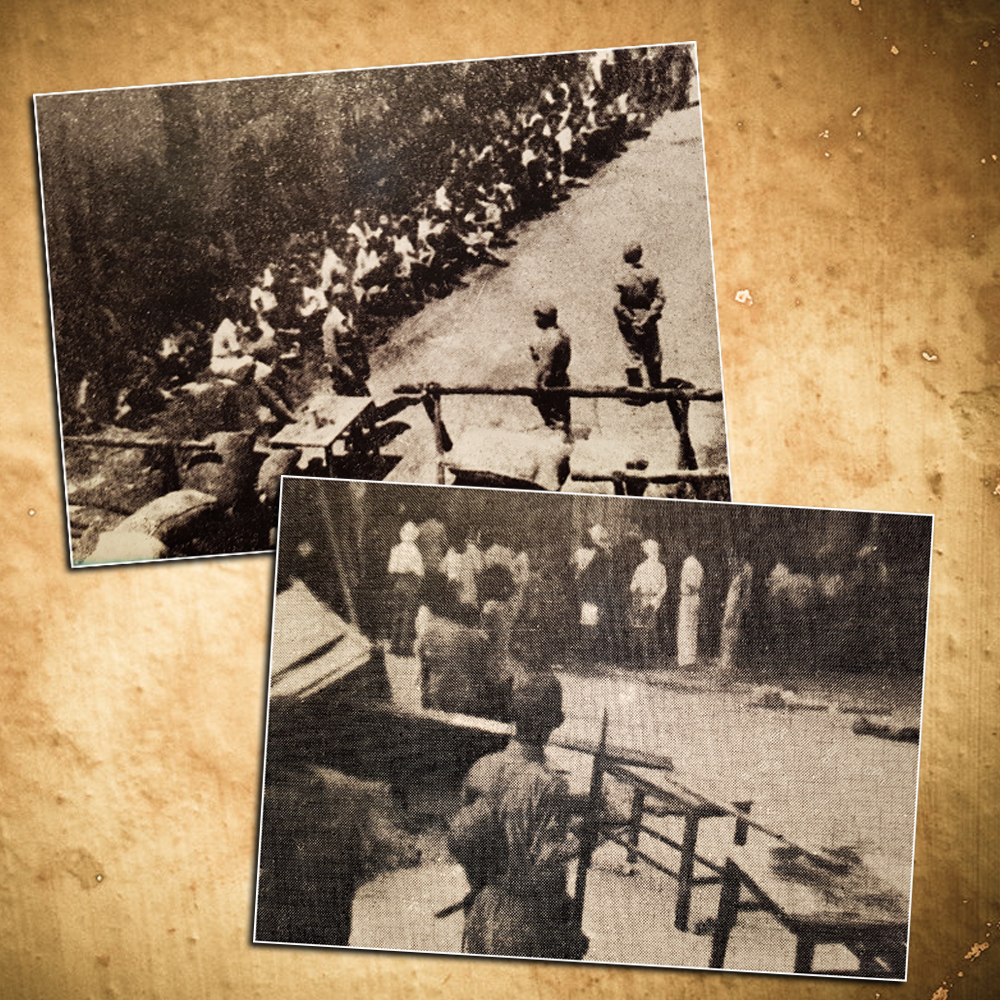 Images of Sook Ching screening centres, taken at the Syonan Gallery.
Images of Sook Ching screening centres, taken at the Syonan Gallery.
The Kempeitai (Japanese military police) immediately fanned out all over the island, rounding up Chinese men (sometimes women and children too) for screening.
Those who did not pass the screening were bundled up onto trucks, and taken to isolated locations around Singapore, where they were killed.
Without warning, the firing squad opened fire at the group of Chinese men. Chen Guang felt a sharp stab to his stomach, causing him to double over. As he struggled to stand, a second bullet ripped through his neck. Then a third into his right cheek.
By the time he crashed into the waves, Chen Guang was gone.
For two weeks, the Japanese went on a killing spree, wiping out an estimated 50,000 Chinese men. From Changi to Bedok to Sentosa, mass graves were dug to hide the bodies. In Siglap alone, five separate mass graves were dug up in 1962. The people called it the Valley of Tears.
Those who were lucky enough to pass the screening received either a stamp on their arm or a certificate to prove that they were cleared.
 Newspaper article from February 24, 1962 edition of The Straits Times via NewspaperSG and Sook Ching certificate with stamp courtesy of the Syonan Gallery.
Newspaper article from February 24, 1962 edition of The Straits Times via NewspaperSG and Sook Ching certificate with stamp courtesy of the Syonan Gallery.
Young Men's Christian Association (YMCA), Singapore
October 10, 1943, 10.30pm
Su Ying gagged as the soldier jabbed the hose further down her throat, forcing her to drink more water. She could feel her stomach bloating beyond what was humanly possible.
About two weeks ago, seven Japanese ships were destroyed at Keppel Harbour, right under the noses of the Japanese. Thinking that it was the work of local guerrilla forces, the Kempeitai rounded up many local Chinese, Malays, and European civilians, in order to torture them into giving information on who was behind the incident.
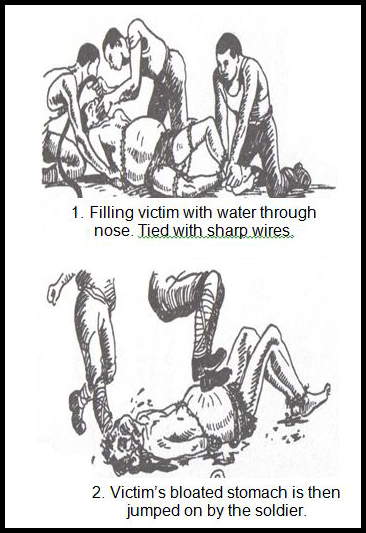 Example of water torture during the Japanese Occupation. Adapted via.
Example of water torture during the Japanese Occupation. Adapted via.
The soldier switched off the water supply. He squatted down and calmly repeated his question.
"Who have you been passing messages to in Changi Prison?"
"I don't know what you're talking about," gasped Su Ying as water dribbled from her mouth. Her distended stomach pushed against her internal organs, causing her to wince each time she took a breath.
That wasn't the truth. The canteen that Su Ying worked at was a hotbed for exchanging undercover messages and necessities such as food, medication, and even radio parts. She had often slipped radio transmitters into food deliveries for the prisoners of war at Changi Prison.
In a fit of rage at her response, the soldier rammed his boot into her stomach. Su Ying's cries of pain were drowned out by the water that gushed out of her mouth, nose, and eyes.
Municipal Building (present day National Gallery), Singapore
September 12, 1945, 11.45am
Syaril Kassim stood on the Padang, surrounded by a throng of people. The excitement was palpable and the crowd was growing restless with each passing minute.
Two weeks ago, news broke that after suffering two atomic bombs from America, Japan had officially surrendered to the Allies. Syaril could hardly believe it. The day that he had been praying for every single day for the last three years was finally here.
The war was over, and today, all of Singapore had come to the Municipal Building to witness the Japanese surrender ceremony taking place.
Singapore had returned to British rule.
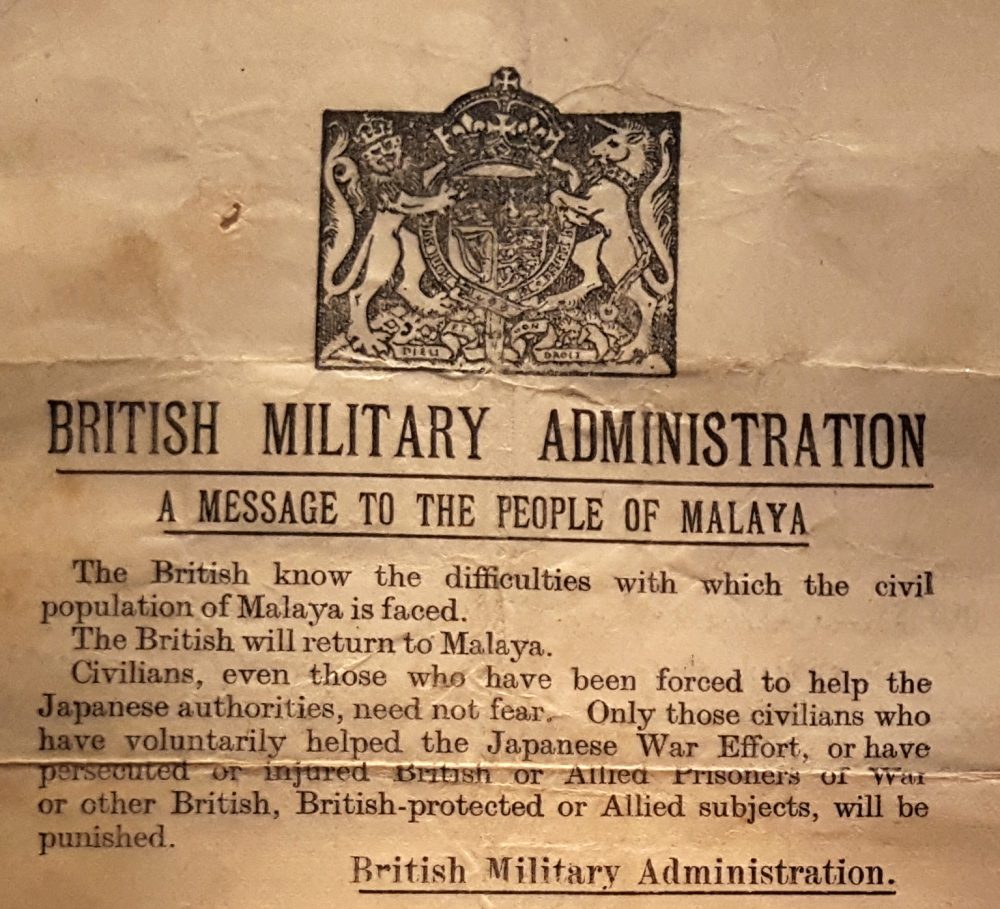 Message from the British Military Administration upon their return to Malaya. Image taken at the Syonan Gallery.
Message from the British Military Administration upon their return to Malaya. Image taken at the Syonan Gallery.
Despite the assurances from the British Military Administration that Britain will return to Malaya, there was a growing disillusionment among the people. Every scar from the war was a reminder that the British was not the infallible defender that the people were always led to believe.
Coupled with the British desire to ease their colonies into gradual self-governance, Singapore soon embarked on the tumultuous journey to independence.
The Syonan Gallery*
For an immersive experience into the war and Japanese Occupation, readers can visit the Syonan Gallery: War and its Legacies located at the former Ford Motor Factory - the place where British forces surrendered to the Japanese on 15 February 1942.
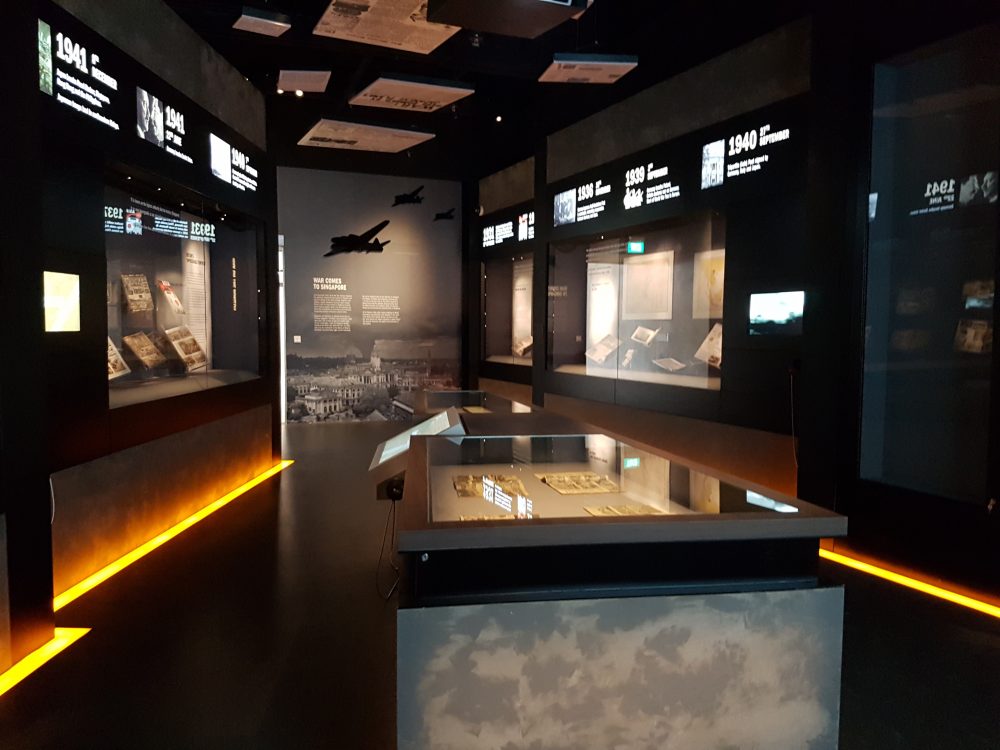
From pre-war Singapore, to the day the Japanese surrendered, to the legacies of World War Two, the Syonan Gallery will give visitors an all-rounded perspective into the driving forces behind the horrors of war.
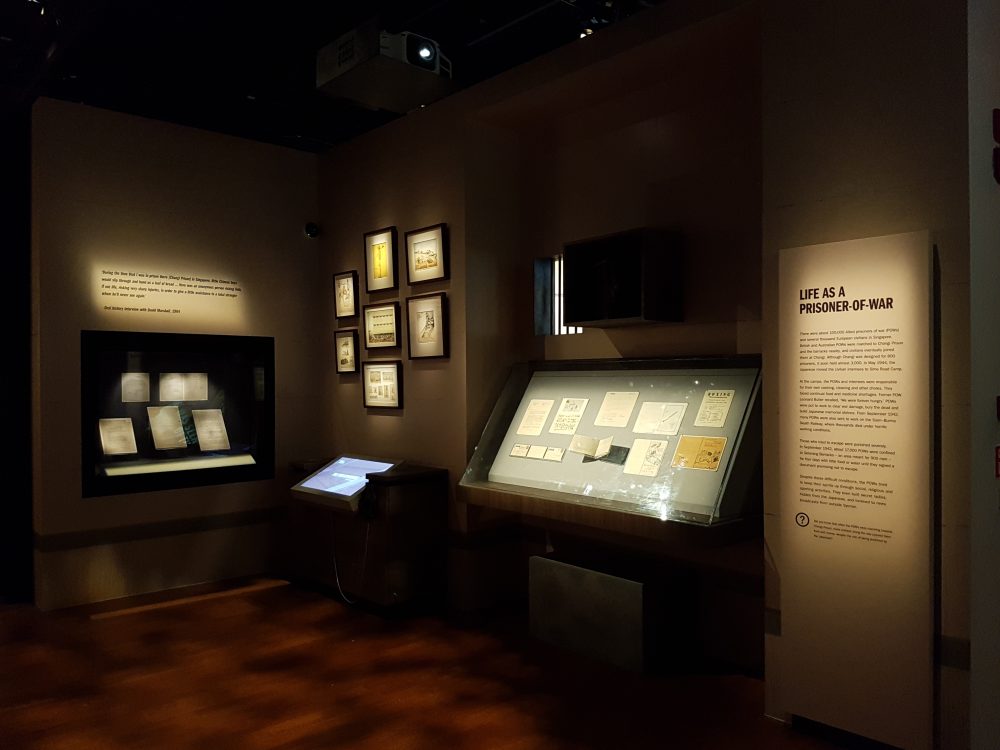
Visitors will be able to view archival materials that were donated by members of the public during a public call held by the National Archives of Singapore.
Additionally, a special garden filled with common food items grown during the Occupation has been set up beside the Gallery to showcase the ingenuity and resilience of the people in finding food substitutes.
The Syonan Gallery will be opened to the public on February 16, 2017. For more details, please visit the National Archives of Singapore.
*As of 17 February 2017, Syonan Gallery has been renamed Surviving the Japanese Occupation.
Here are more articles you can read on World War 2 and the Japanese Occupation:
The Syonan Gallery, Empire Ball, and the Singaporean identity
On the road to Syonan-to: How Singapore got swept into WW2
Here’s what LKY and other founding fathers did when WW2 hit S’pore 75 years ago
Here’s how S’pore’s Japanese Occupation survivors endured 3 years of hunger: Part 1
Here’s how S’pore’s Japanese Occupation survivors endured 3 years of hunger: Part 2
Food people ate during Japanese Occupation gets yummy 21st century makeover
Top photo is an image taken at the Syonan Gallery and includes a quote from a survivor of the Japanese Occupation. His oral history interview (Accession Number 000374) can be found at the National Archives Online.
If you like what you read, follow us on Facebook and Twitter to get the latest updates.
If you like what you read, follow us on Facebook, Instagram, Twitter and Telegram to get the latest updates.
